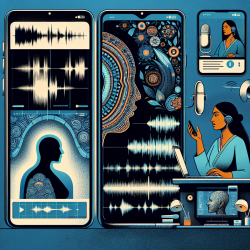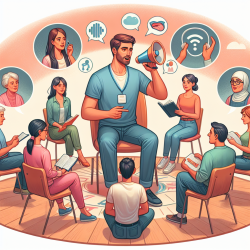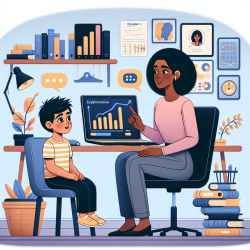The recent study titled A Preliminary Investigation of the Reliability of Acoustic Parameters of Voice through Smartphone Recordings in Individuals with Dysphonia provides significant insights into the reliability of using smartphone recordings for the acoustic analysis of voice in individuals with dysphonia. This research is pivotal for speech-language pathologists (SLPs) aiming to enhance their clinical practice, particularly in the context of telepractice.
In this study, 20 participants were divided into two groups: those with typical voices and those with pathological voices. Acoustic parameters such as Fundamental Frequency (F0), Cepstral Peak Prominence Smoothed (CPPS), and Acoustic Voice Quality Index (AVQI) were analyzed. The results indicated no significant perceptual differences between real-time voice and tele-recorded voice, suggesting that smartphone recordings can be a reliable method for assessing voice quality.
Here are some key takeaways for practitioners:
- Reliability of CPPS: The study found that CPPS is a more reliable acoustic parameter than AVQI when using tele-recorded voice samples. CPPS values were consistent between real-time and tele-recorded voices, making it a robust measure for clinical use.
- Importance of Controlled Environment: The study emphasized the need for a controlled recording environment to minimize ambient noise, which can affect parameters like Shimmer and HNR. Practitioners should instruct clients to record in quiet settings to ensure accurate results.
- Telepractice Efficacy: The findings support the efficacy of telepractice in voice assessment, particularly through asynchronous methods where clients can record and send voice samples. This approach is convenient and reduces the risk of healthcare-acquired infections.
- Further Research: While the study provides promising results, it also highlights the need for further research involving a larger population and different types of smartphones. Practitioners are encouraged to contribute to this growing body of research to refine telepractice methods further.
By integrating these findings into your practice, you can enhance the accuracy and reliability of voice assessments, ultimately leading to better outcomes for children with dysphonia. Utilizing smartphone recordings for acoustic analysis can make voice therapy more accessible and effective, particularly in remote or underserved areas.
To read the original research paper, please follow this link: A Preliminary Investigation of the Reliability of Acoustic Parameters of Voice through Smartphone Recordings in Individuals with Dysphonia.










